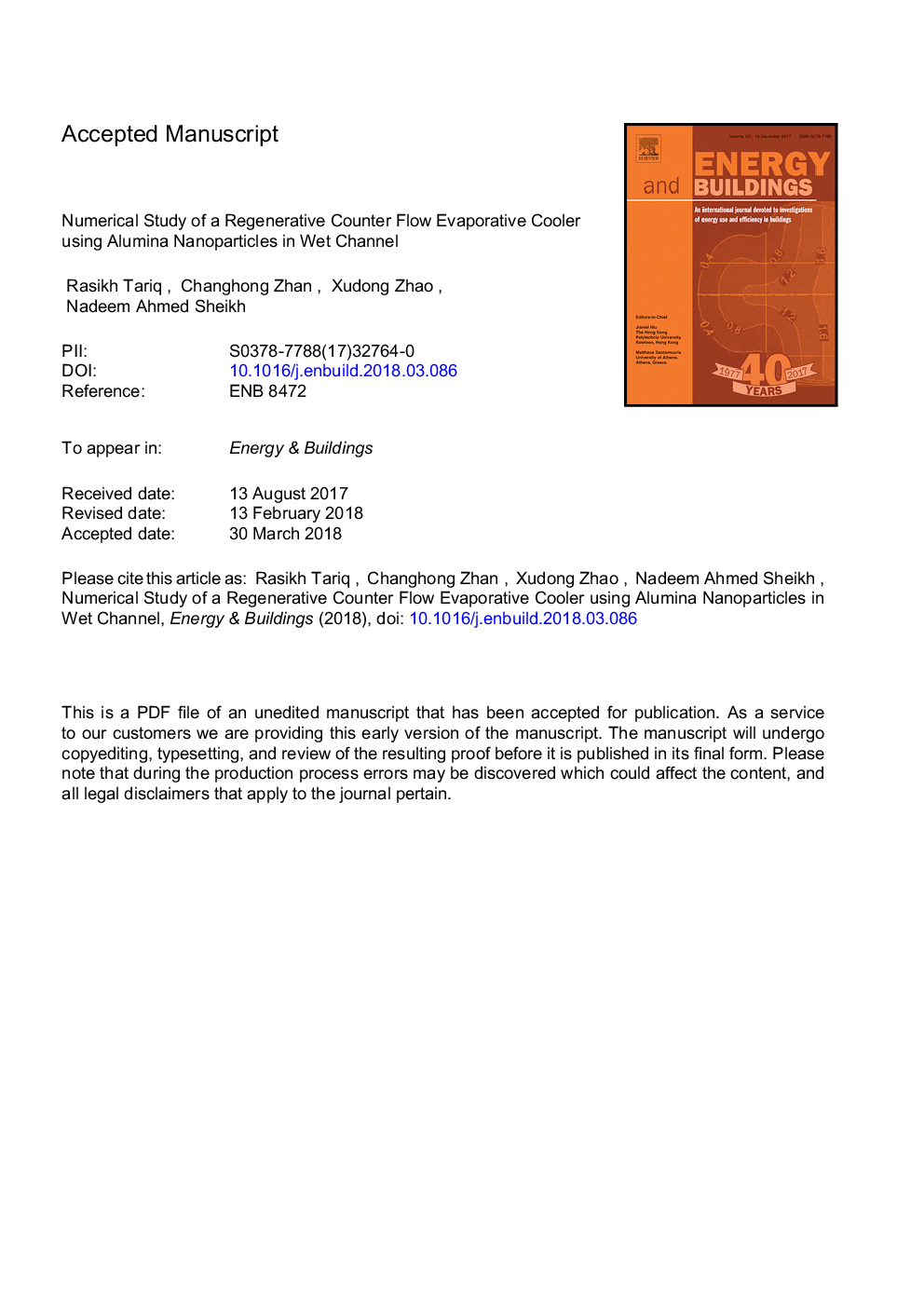| Article ID | Journal | Published Year | Pages | File Type |
|---|---|---|---|---|
| 6728198 | Energy and Buildings | 2018 | 31 Pages |
Abstract
The use of Maisotsenko Cycle (M-Cycle) has enhanced the domain of evaporative cooling technologies to sub-wet bulb temperature cooling while ensuring moisture control. Several studies have demonstrated the use of cross-flow heat & mass exchanger (HMX) offers higher cooling capacity; however, it has lower cooling effectiveness and Energy Efficiency Ratio (EER). In contrast, a counter-flow (HMX) offers high cooling effectiveness with lower cooling capacity. In this paper, the performance of counter-flow HMX is enhanced by addition of alumina nanoparticles in feed water due to enhanced heat and mass transfer characteristics of nanofluids compared to original base fluid. Here, a mathematical model is formulated by incorporating the nanofluids in a selected control volume. The developed model is solved numerically on a discretized HMX length. Initially, the model is benchmarked against previously published results using water as base fluid. A comparison between HMX performance using water and alumina nanofluid is performed in terms of Performance Enhancement Ratio (PER). PER indicates 1-18% increase in cooling effectiveness, 18-43% increase in cooling capacity and 9-19% increase in EER by using alumina in water when working air temperature is increased from 20°C to 45°C. Similarly, an increase in PER is also observed by changing air velocity. Increase of 41% is observed in cooling capacity and 18% increase in EER is observed by changing particle volume fraction from 0 to 2%. This research identifies ways to reduce the carbon emissions of a building by increasing the energy efficiency of existing evaporative cooling technology using nanofluids.
Related Topics
Physical Sciences and Engineering
Energy
Renewable Energy, Sustainability and the Environment
Authors
Rasikh Tariq, Changhong Zhan, Xudong Zhao, Nadeem Ahmed Sheikh,
